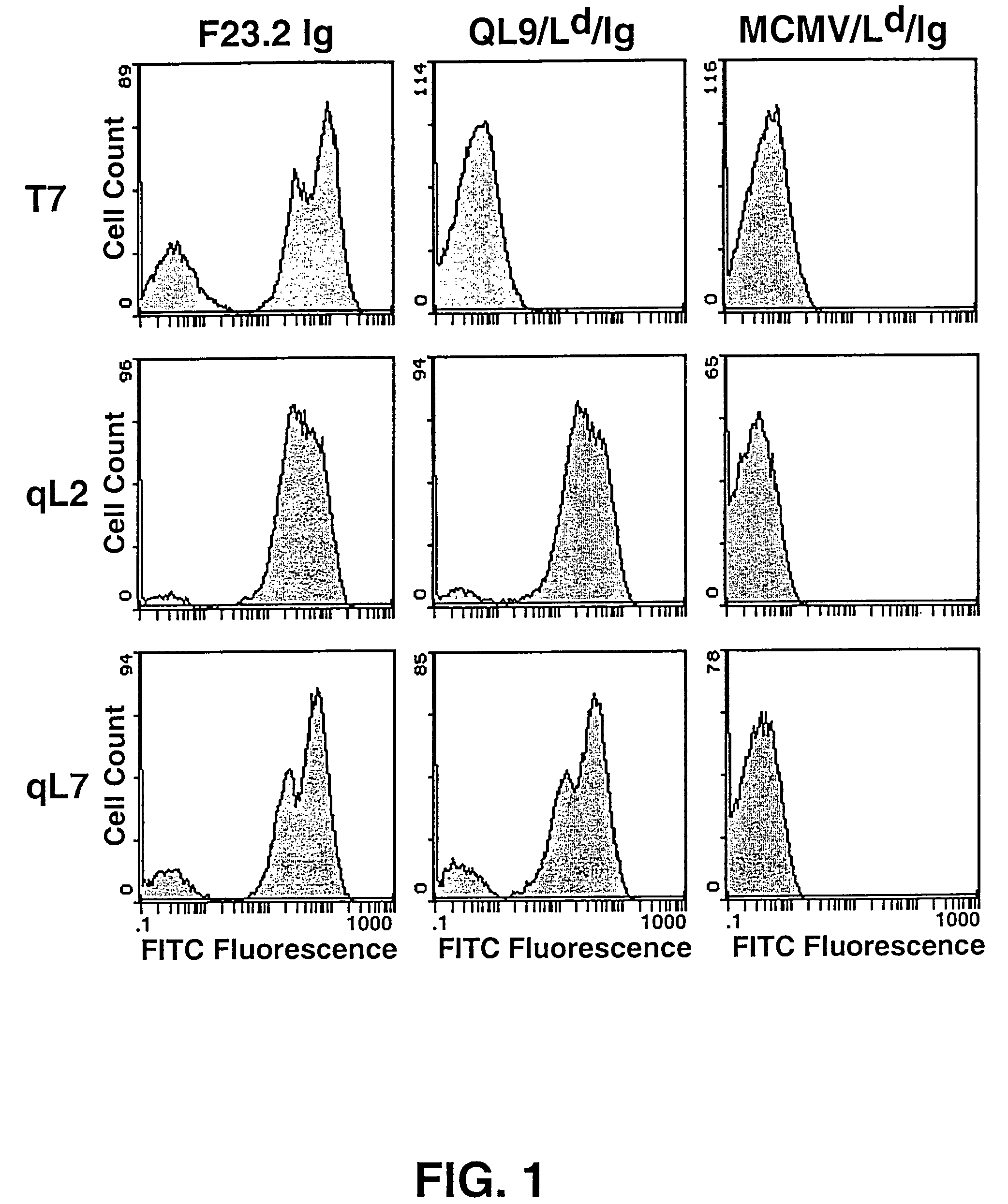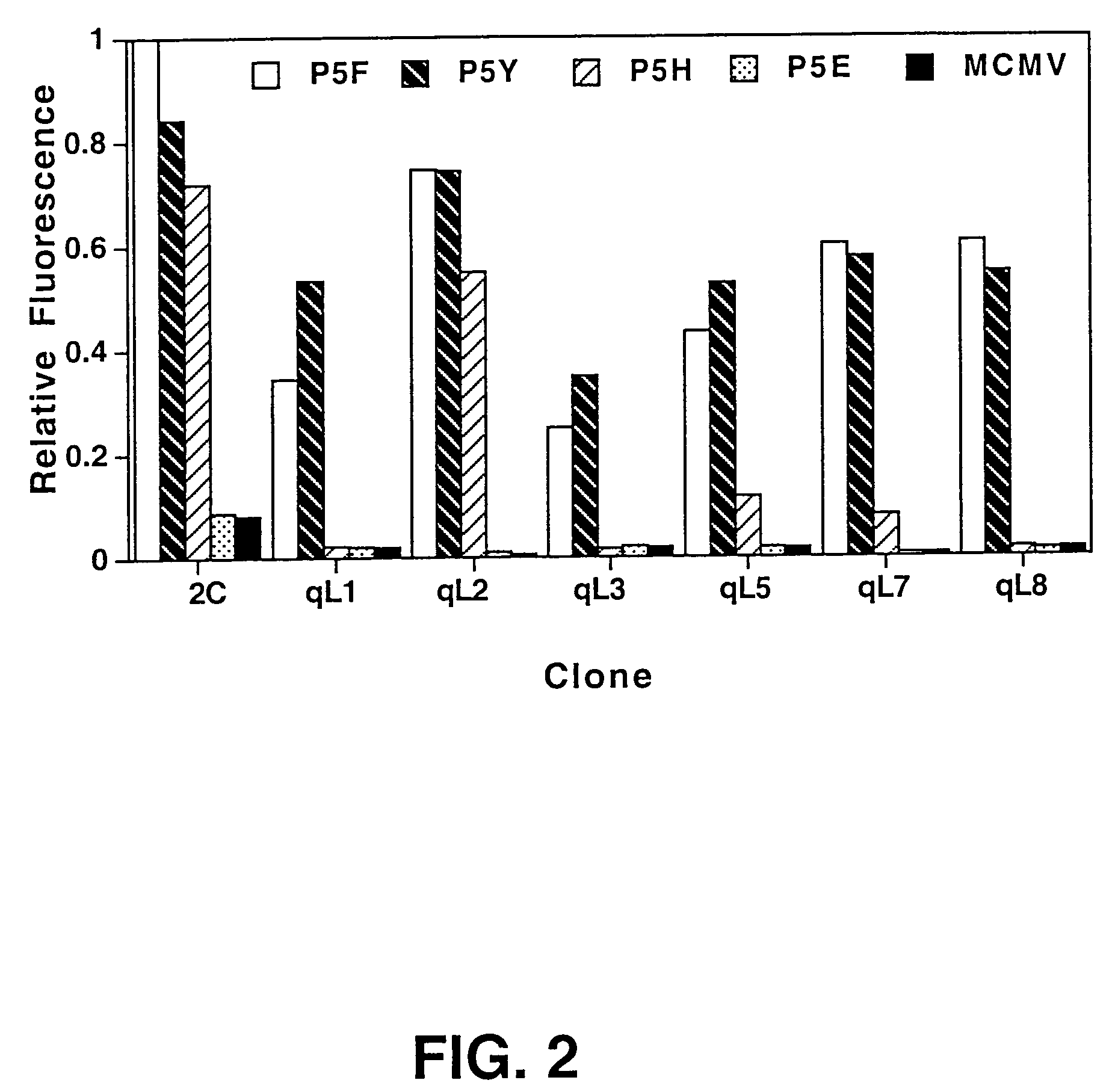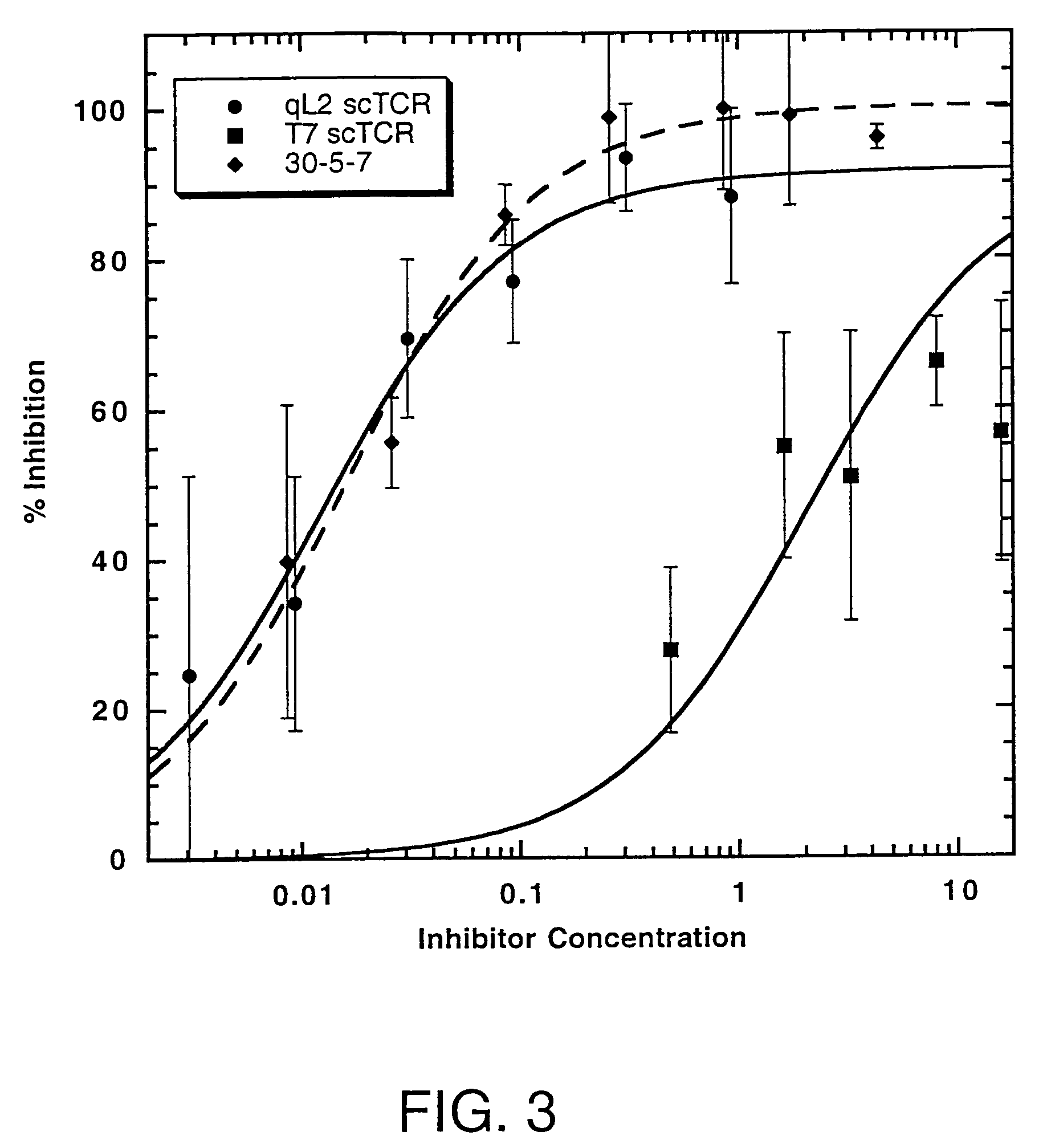High affinity TCR proteins and methods
- Summary
- Abstract
- Description
- Claims
- Application Information
AI Technical Summary
Benefits of technology
Problems solved by technology
Method used
Image
Examples
example 1
Library Construction
[0088]The 2C scTCR used as the scaffold for directed evolution (T7) contained six mutations (βG17E, βG42E βL81S, αL43P, αW82R, and αI118N) that have been shown to increase the stability of the TCR but still allow pMHC binding [see, e.g., Shusta, E. V. et al. (1999) J. Mol. Biol. 292, 949-956].
[0089]Mutagenic PCR of the T7 scTCR VαCDR3 was performed using an AGA2-specific upstream primer (GGCAGCCCCATAAACACACAGTAT (SEQ ID NO:3)) and a degenerate downstream primer CTTTTGTGCCGGATCCAAATGTCAG(SNN)5GCTCACAGCACAGAAGTACACGGCCGA GTCGCTC (SEQ ID NO:4). Underlined bases indicate the positions of silent mutations introducing unique BamHI and EagI restriction sites. The purified PCR product was digested with NdeI and BamHI and ligated to NdeI-BamHI digested T7 / pCT302 [Boder and Wittrup (1997) supra; Kieke et al. (1999) supra; Shusta et al. (1999) supra]. The ligation mixture was transformed into DH10B electro-competent E. coli (Gibco BR1, Gaithersburg, Md.), and transformants ...
example 2
Cell Sorting
[0090]The yeast library [Shusta et al. (1999) Curr. Opin. Biotechnol. 10:117-122] was grown in SD-CAA (2% dextrose, 0.67% yeast nitrogen base, 1% casamino acids (Difco, Livonia, Mich.)) at 30° C. to an OD600=4.0. To induce surface scTCR expression, yeast were pelleted by centrifugation, resuspended to an OD600=1.0 in SG-CAA (2% galactose, 0.67% yeast nitrogen base, 1% casamino acids), and incubated at 20° C. for about 24 hr. In general, about 107 cells / tube were incubated on ice for 1 hr with 50 μl of QL9 / Ld / IgG dimers [Dal Porto et al. (1993) supra] diluted in phosphate buffered saline, pH 7.4 supplemented with 0.5 mg / ml BSA (PBS-BSA). After incubation, cells were washed and labeled for 30 min with FITC-conjugated goat anti-mouse IgG F(ab7)2 (Kirkegaard & Perry, Gaithersburg, Md.) in PBS-BSA. Yeast were then washed and resuspended in PBS-BSA immediately prior to sorting. Cells exhibiting the highest fluorescence were isolated by FACS sorting with a Coulter 753 bench. Af...
example 3
Soluble scTCR Production
[0091]The T7 and qL2 open reading frames were excised from pCT302 NheI-XhoI and ligated into NheI-XhoI digested pRSGALT, a yeast expression plasmid [Shusta et al. (1999) supra]. Ligated plasmids were transformed into DH10B electro-competent E. coli (Gibco BRL). Plasmid DNA was isolated from bacterial cultures and transformed into Saccharomyces cerevisiae BJ5464 (α ura3-52 trp1 leu2 1 his3 200 pep4: HIS3 prb1 1.6R can1 GAL) [Shusta et al. (1999) supra]. Yeast clones were grown in one liter SD-CAA / Trp (20 mg / L tryptophan) for 48 hr at 30° C. To induce scTCR secretion, cells were pelleted by centrifugation at 4000×g, resuspended in one liter SG-CAA / Trp supplemented with 1 mg / ml BSA, and incubated for 72 hr at 20° C. Culture supernatants were harvested by centrifugation at 4000×g, concentrated to about 50 ml, and dialyzed against PBS, pH 8.0. The 6His-tagged scTCRs were purified by native nickel affinity chromatography (Ni-NTA Superflow, Qiagen, Valencia, Calif.;...
PUM
| Property | Measurement | Unit |
|---|---|---|
| Fluorescence | aaaaa | aaaaa |
| Chemiluminescence | aaaaa | aaaaa |
| Affinity | aaaaa | aaaaa |
Abstract
Description
Claims
Application Information
 Login to View More
Login to View More - Generate Ideas
- Intellectual Property
- Life Sciences
- Materials
- Tech Scout
- Unparalleled Data Quality
- Higher Quality Content
- 60% Fewer Hallucinations
Browse by: Latest US Patents, China's latest patents, Technical Efficacy Thesaurus, Application Domain, Technology Topic, Popular Technical Reports.
© 2025 PatSnap. All rights reserved.Legal|Privacy policy|Modern Slavery Act Transparency Statement|Sitemap|About US| Contact US: help@patsnap.com



